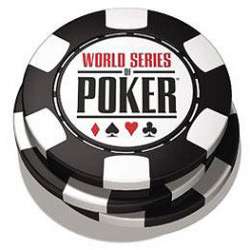 Yet another Stimulus Special event was played for Event 20: $1,000 No Limit Hold’em. 3,175 people showed up at the Rio, all on June 12th, to begin their march for the bracelet. 324 of these players cashed this event, almost as many as played Event 19 altogether!
Yet another Stimulus Special event was played for Event 20: $1,000 No Limit Hold’em. 3,175 people showed up at the Rio, all on June 12th, to begin their march for the bracelet. 324 of these players cashed this event, almost as many as played Event 19 altogether!
A min-cash was just shy of $2,000, effectively doubling your entry fee. Gavin Smith, Hoyt Corkins, John Phan, and Lex Veldhuis represented the pros in this event, toeing their way through this massive field to make some money.
Frequently, these $1,000 buyins become the story of the amateurs. Almost everyone at the final table experienced their first WSOP cash at this event. There was a total of one bracelet between the nine of them (which went with 9th place finisher James Schaaf).
One player at the final table, though, has had his share of World Series success. Jason Somerville was at his fifth WSOP final table. His previous 4 finishes were each 2nd – 5th. Before this event, his winnings at the WSOP were just over $1 million.
It came as no surprise that Somerville got heads-up against Yashar Darian. Darian had a few previous cashes, all last year, and all at $1,000 or $1,500 events. However, before this event, he had failed to crack the top 200. The heads-up play did not last long, however. They got it all-in on the very first hand of heads-up, putting almost all of the chips in play into the pot. The chips were counted down, and Somerville had Darian outchipped. When the cards were turned over, Darian knew he was doomed: Somerville had the aces. Somerville was able to fade the board and dispatch the New Jersey native, sending him home with $300k.
Somerville, however, rounded out his final table experience with his win, beating the largest single day starting field in WSOP history. He collected his first bracelet and $493,091. He had a very supportive rail, including good friend Daniel Negreanu, and parlayed that into an astounding victory.

